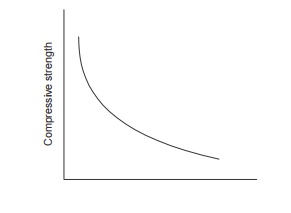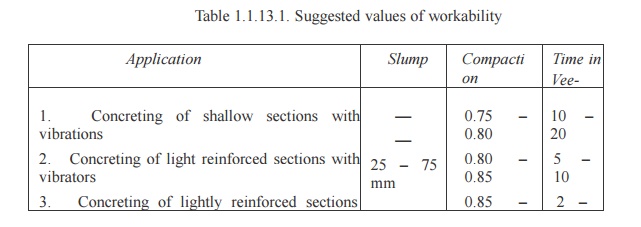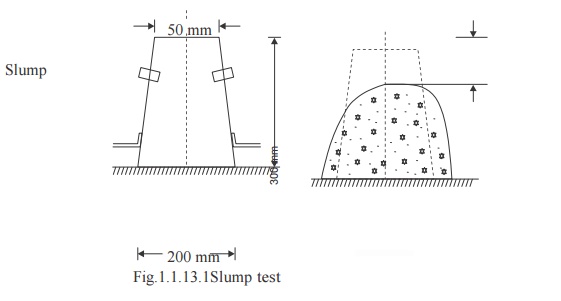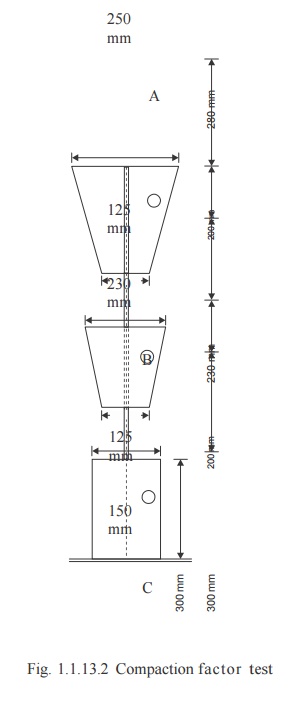Chapter: Civil Engineering : Surveying and Civil Engineering Materials
Plain and Green concrete
PLAIN CONCRETE
Major ingredients of concrete are:
Functions of Various Ingredients
Properties of Green concrete
Tests on Concrete
PLAIN CONCRETE
Plain concrete,
commonly known as concrete, is an intimate mixture of binding material, fine
aggregate, coarse aggregate and water. This can be easily moulded to desired
shape and size before it looses plasticity and hardens. Plain concrete is
strong in compression but very weak in tension. The tensile property is
introduced in concrete by inducting different materials and this attempt has
given rise to RCC, RBC, PSC, FRC, cellular concrete and Ferro cement. In this
chapter proportioning, mixing, curing, properties, tests and uses of plain
concrete is dealt in detail. The other improved versions of concrete are
explained and their special properties and uses are pointed out.
Major ingredients of concrete are:
1. Binding material (like cement, lime, polymer)
2. Fine aggregate (sand)
3. Coarse aggregates (crushed stone, jelly)
4. Water.
A small quantity of admixtures like air
entraining agents, water proofing agents, workability agents etc. may also be
added to impart special properties to the plain concrete mixture.
Depending upon the
proportion of ingredient, strength of concrete varies. It is possible to
determine the proportion of the ingredients for a particular strength by mix
design procedure.
.In proportioning of concrete it is kept in mind
that voids in coarse aggregates are filled with sand and the voids in sand are
filled with cement paste.
Functions of Various Ingredients
Cement is the binding material. After addition
of water it hydrates and binds aggregates and the surrounding surfaces like
stone and bricks. Generally richer mix (with more cement) gives more strength.
Setting time starts after 30 minutes and ends after 6 hours. Hence concrete
should be laid in its mould before 30 minutes of mixing of water and should not
be subjected to any external forces till final setting takes place.
Coarse aggregate consists of crushed
stones. It should be well graded and the stones should be of igneous origin.
They should be clean, sharp, angular and hard. They give mass to the concrete
and prevent shrinkage of cement. Fine aggregate consists of river sand. It
prevents shrinkage of cement. When surrounded by cement it gains mobility
enters the voids in coarse aggregates and binding of ingradients takes place.
It adds density to concrete, since it fills the voids. Denser the concrete
higher is its strength.
Water used for making concrete
should be clean. It activates the hydration of cement and forms plastic mass.
As it sets completely concrete becomes hard mass. Water gives workability to
concrete which means water makes it possible to mix the concrete with ease and
place it in final position. More the water better is the workability.
However excess water reduces the
strength of concrete. Figure 1.1.13.1 shows the variation of strength of
concrete with water cement ratio. To achieve required workability and at the
same time good strength a water cement ratio of 0.4 to 0.45 is used, in case of
machine mixing and water cement ratio of 0.5 to 0.6 is used for hand mixing.

Water/cement ratio
Properties of Green concrete
1.Workability: This is defined as the ease with which concrete can be compacted
fully without seggregating and bleeding. It can also be defined as the
amount of internal work required to fully compact the concrete to optimum
density. The workability depends upon the quantity of water, grading, shape and
the percentage of the aggregates present in the concrete.
Workability is measured by
(a) The
slump observed when the frustum of the standard cone filled with concrete is
lifted and removed.
(b) The
compaction factor determined after allowing the concrete to fall through the
compaction testing machine.
(c) The time
taken in seconds for the shape of the concrete to change from cone to cylinder
when tested in Vee-Bee consistometer.
The suggested
values of workability for different works are as shown in Table 1.1.13.1.
Table 1.1.13.1. Suggested values of workability

2. Segregation: Separation of coarse particles from the green concrete is
called segregation. This may happen due to lack of sufficient quantity
of finer particles in concrete or due to throwing of the
concrete from greater heights at the time of
placing the concrete. Because of the segregation, the cohesiveness of the
concrete is lost and honey combing results. Ultimately it results in the loss
of strength of hardened concrete. Hence utmost care is to be taken to avoid
segregation.
3. Bleeding: This refers to the appearance
of the water along with cement particles on the surface of the freshly
laid concrete. This happens when there is excessive quantity of water in the
mix or due to excessive compaction. Bleeding causes the formation of pores and
renders the concrete weak. Bleeding can be avoided by suitably controlling the
quantity of water in the concrete and by using finer grading of aggregate
4.
Harshness: Harshness is the resistance offered by concrete to its surface
finish. Harshness is due to presence of lesser quantity of fine
aggregates, lesser cement mortar and due to use of poorely graded aggregates.
It may result due to insufficient quantity of water also. With harsh concrete
it is difficult to get a smooth surface finish and concrete becomes porous.
Tests on Concrete
The following are
some of the important tests conducted on concrete:
2. Compaction factor test.
3. Crushing strength test.
1. Slump Test:
This test is conducted to determine the workability of concrete. It needs a
slump cone for test (Fig. 3.3). Slump cone is a vessel in the shape of a
frustum of a cone with diameter at bottom 200 mm and 50 mm at top and 300 mm
high. This cone is kept over a impervious platform and is filled with concrete
in four layers.
Each layer is
tamped with a 16 mm pointed rod for 25 times. After filling completely the cone
is gently pulled up. The decrease in the height of the concrete is called
slump. Higher the slump, more workable is the concrete. The desired values of
slumps for variousworks have been shown in Table 1.1.13.1

Fig.1.1.13.1 Slump test
2. Compaction Factor Test: This is another test to identify the workability of concrete.
This test is conducted in the laboratory. The test equipment consists of
two hoppers and a cylinder fixed to a stand, the dimensions and the distances
between the three vessels being standardized. Vessel A and B are having hinged
bottoms whereas cylinder C is having fixed bottom. [Ref. Fig. 1.1.13.2]
Top vessel A is filled with the
concrete to be tested. As soon as it is filled, the hinged door is opened.
Concrete is collected in vessel B. Then the hinged door of B is opened to
collect concrete in cylinder C. The concrete in cylinder C is weighted. Let it
be W1.
Now cylinder is
again filled with the sample of concrete in 50 mm layers, which is compacted by
ramming and vibrating. Then the weight of compacted concrete is determined. Let
this weight be W2.
The ratio W1/W2
is termed as compaction factor. The specified values of compaction factor for
different works are already listed in Table 3.2.

Fig. 1.1.13.2 Compaction factor test
Crushing Strength
Test: Metallic moulds of size 150 mm × 150 mm × 150 mm are used for casting
concrete cubes. Before filling mould, it is properly oiled on its inner
surfaces, so that cubes can be easily separated. Fresh cube is filled with
concrete to be tested in 3 layers and kept in the room. After 24 hours, cube is
removed from the mould and kept under water for curing. After 28 days of curing
cubes are tested in the compression testing machine. In this test cubes are
placed over the smooth surface which is in contact with side plates of mould.
The crushing load is noted and crushing strength is found as
load divided by
surface area (150 × 150 mm2). Code
specify the desirable strength of concrete for 3 days and 7 days for quick
assessment of strength of concrete.
Desirable Properties Concrete
Appropriate quality and quantity of cement, fine
aggregate, coarse aggregate and water should be used so that the green concrete
has the following properties:
(a) Desired workability
(b) No seggregation in
transporting and placing (c) No bleeding and
(d) No harshness
Related Topics